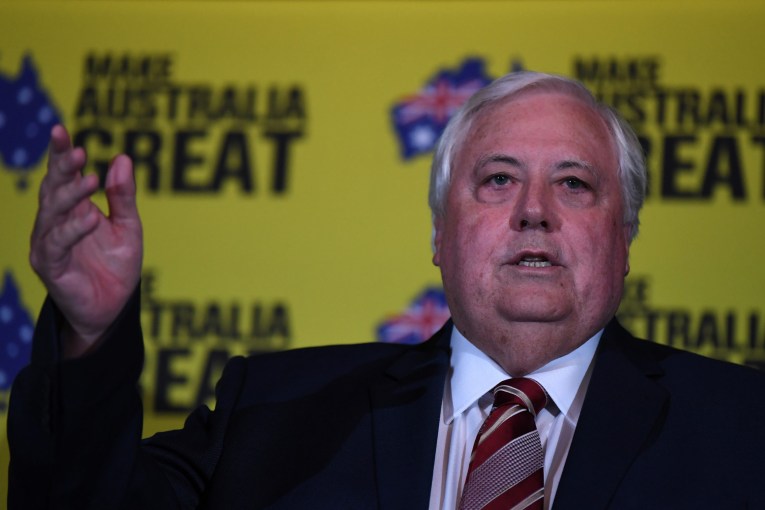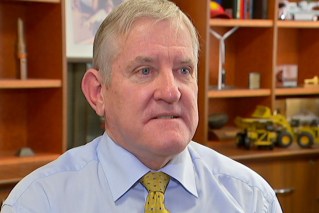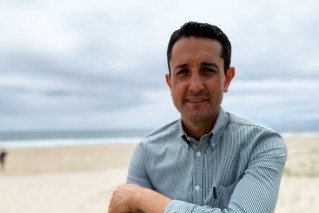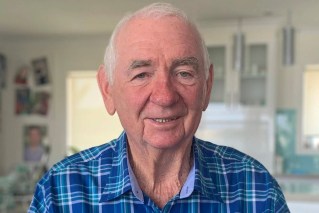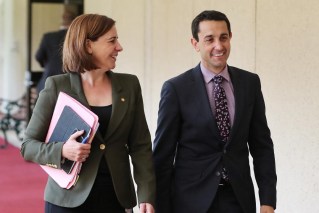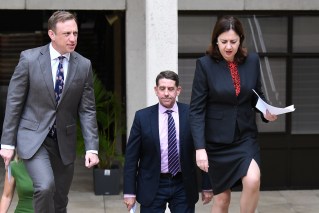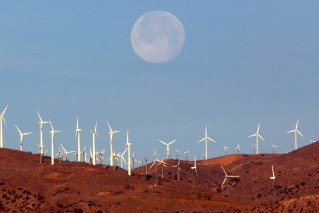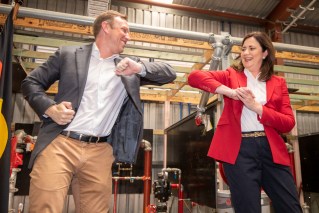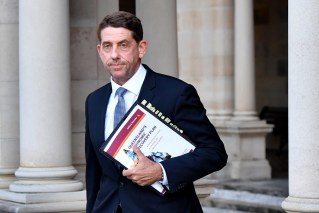As the first votes are cast, this election has already taken on an odd sense of inevitability
A record number of postal votes and pre-polling are already being cast for the state election, which makes the complacency by the major parties all the more baffling, writes Dennis Atkins

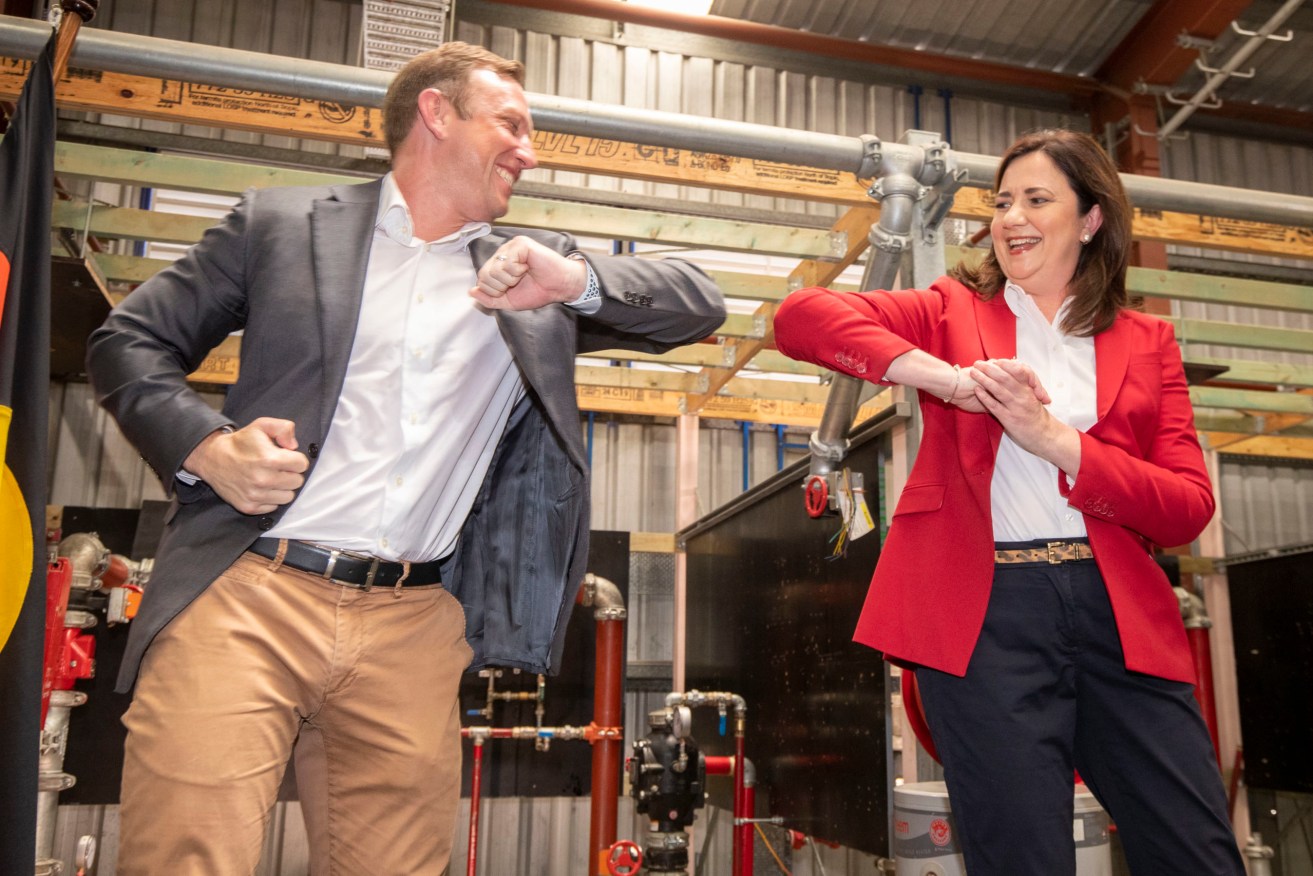
Queensland Premier Annastacia Palaszczuk elbow bumps Deputy Premier Steven Miles at the Queensland Labor election campaign launch. (AAP Image/Glenn Hunt)
Just as real voters begin casting real votes, an air of unreality has settled over Queensland’s 2020 election.
It is, as we keep hearing and keep saying, an election like no other, held in a pandemic year when people have been frightened as never before by a deadly infectious virus.
It’s also playing out against the deliberate shutting down of much of the economy for months and then a stuttering recovery that has been hampered by policies to shut borders, domestic and international.
In this political and economic environment, you’d expect some level of uncertainty and contestability about the election battle, especially given the dire lack of support with which Annastacia Palaszczuk and Labor kicked off the year.
A record number of postal votes – about one-third of the 3.3 million on the rolls – have been requested and will begin to be returned this week. On top of that, another million Queenslanders are expected to vote early, using the expanded opportunities through late night and special Saturday booths in 200 polling places.
This means that what the politicians are saying, either through media appearances or in paid social and mainstream advertising, will be of diminishing importance as this week passes.
By next week much of what the 597 candidates are saying will be like standing in the front yard and shouting at the clouds.
This all makes the mood in the major parties baffling. In Labor ranks there’s a complacency creeping around – candidates and operatives think things are in the bag and those 52/48 two-party-preferred opinion polls are bankable.
Why bother getting up from the morning coffee and doing some hard work like door-knocking and other canvassing?
At the same time in LNP circles, there’s a fatalism suggesting the contest is done and dusted, that Labor is going to win and the conservatives have again blown their chances.
Again, why expend any energy or effort in convincing people who have seemingly made up their minds?
This is nonsense on stilts. This election was always going to be close and it will be. The result will be in the four point range of 48 and 52 per cent and given the regional spread of seats could go either way.
A stronger than anticipated showing by Labor in the southeast doesn’t mean the LNP and Katter’s Australian Party might not make particular gains in regions, from Cairns, through Townsville and the Bowen Basin down to seats around Mackay.
Labor picking up a few seats in the southeast looks likely but not certain. Seats around Brisbane are still vulnerable to shifts in voting habits, whether it is an uptick in Greens support in the inner metro area or some 2017 One Nation votes moving over to the LNP in other seats.
There’s also a strange calm about the LNP campaign, which is remarkably positive. Perhaps the hard-hitting negative attacks on Labor and its record over the past five years are to come but days when voter attention is keenest and available are fast running out.
Some in the LNP believe the electorate doesn’t like negativity and respond better to a positive message. This has echoes of the 2015 campaign when the unsuccessful defence of Campbell Newman was seen as having failed to go for Labor’s vulnerabilities – an error highlighted by the postmortem of that loss by former leaders Rob Borbidge and Joan Sheldon.
As one political pro observed this week: “Negative advertising is a bit like Christmas shopping – no one likes to do it but everyone does it in the end.”
So far, the negative heavy lifting is being done by disrupter Clive Palmer and his loophole-exploiting campaign.
By standing in more than half of the seats but not engaging at an electorate level (because they don’t expect to win any seats), Palmer’s United Australia Party can use the full quantum allowed under the expenditure cap on state-wide, anti-Labor advertising.
This is expected to be at least $7 to $8 million – an amount that can go a long way in these cheap advertising, pandemic times.
Palmer has shown he has no regard for the facts when launching fantastic claims about Labor planning a 20 per cent death tax. This weakness in the novel spending cap laws needs to be reviewed after this election to make sure such abuses are at least curbed.
These strange sentiments within the major parties and the quickly elapsing final two weeks look like making this election an even harder to judge crapshoot than it was already looking like.
Just what to make of the last week – when more than half of the electorate will have voted and shut their minds to electioneering – is anyone’s guess. It is shaping up as the weirdest final stretch for any election in Queensland’s 160 years of choosing state governments.
